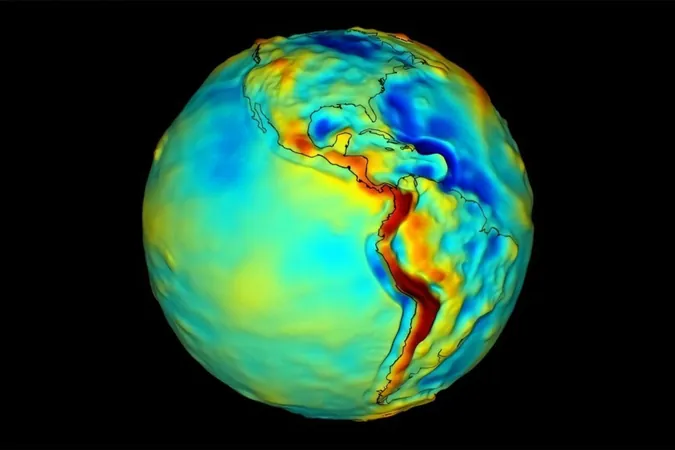
NASA's Ambitious Journey: Tracking Earth's Gravity with Quantum Precision
2025-04-16
Author: Jacques
NASA's Next-Gen Quantum Gravity Sensor
Get ready for a scientific breakthrough! NASA is on the verge of launching its first quantum gravity sensor into space, a compact instrument that could revolutionize how we monitor everything from underground water supplies to hidden oil reservoirs—all by observing the behavior of atoms influenced by gravity.
What is the Quantum Gravity Gradiometer Pathfinder (QGGPf)?
At the forefront of this innovation is the Quantum Gravity Gradiometer Pathfinder (QGGPf), developed by the brains at NASA's Jet Propulsion Laboratory (JPL) alongside key partners. This cutting-edge device acts as a gravity gradiometer, measuring variations in gravitational pull between nearby objects.
The Mystery of Earth's Ever-Changing Gravity
Did you know that Earth's gravity is constantly fluctuating? This subtle dance of gravitational forces is affected by geological movements, like tectonic shifts and glacial activities. While these changes are hardly noticeable in our daily lives, they become crucial data points for scientists wielding advanced instruments.
Unlocking the Secrets Beneath Our Feet
The implications of detecting these tiny variations are significant for navigation, natural resource exploration, and even national security. With the right technology, scientists can virtually 'see' what's lurking beneath the Earth's crust, providing clearer insight into our planet's hidden treasures.
Harnessing Quantum Mechanics for Groundbreaking Discoveries
"We could determine the mass of the Himalayas using atoms," said Jason Hyon, JPL's Chief Technologist for Earth Science. The QGGPf will utilize rubidium atoms cooled to nearly absolute zero, allowing researchers to harness the peculiar wave-like behavior of atoms for precise measurements from orbit.
Revolutionary Measurements in a Compact Package
Here’s where it gets even more exciting: the QGGPf employs two ultra-cold clouds of atoms as its test masses. By comparing how quickly these clouds fall, scientists can detect variations in gravitational strength. The result? Exceptional precision and repeatability thanks to quantum principles.
A Game-Changer in Sensitivity and Insight
Compared to classical gravity sensors, the QGGPf promises to be ten times more sensitive, paving the way for pinpoint accuracy and a better understanding of subterranean activities—potentially expanding our knowledge to the surfaces of other planets.
Countdown to Launch: Is the Future of Mapping Here?
Set to launch by the end of the decade, QGGPf's primary goal is to validate this cutting-edge technology. "No one has flown one of these before," stated JPL postdoc Ben Stray. They need to test the device in space to unleash its true potential.
Mapping the Universe Like Never Before
If all goes according to plan, QGGPf could redefine how we understand Earth's gravity and potentially unlock the secrets of distant worlds. Buckle up, because the future of science is soaring to new heights!









 Brasil (PT)
Brasil (PT)
 Canada (EN)
Canada (EN)
 Chile (ES)
Chile (ES)
 Česko (CS)
Česko (CS)
 대한민국 (KO)
대한민국 (KO)
 España (ES)
España (ES)
 France (FR)
France (FR)
 Hong Kong (EN)
Hong Kong (EN)
 Italia (IT)
Italia (IT)
 日本 (JA)
日本 (JA)
 Magyarország (HU)
Magyarország (HU)
 Norge (NO)
Norge (NO)
 Polska (PL)
Polska (PL)
 Schweiz (DE)
Schweiz (DE)
 Singapore (EN)
Singapore (EN)
 Sverige (SV)
Sverige (SV)
 Suomi (FI)
Suomi (FI)
 Türkiye (TR)
Türkiye (TR)
 الإمارات العربية المتحدة (AR)
الإمارات العربية المتحدة (AR)